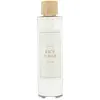What's inside
What's inside
 Key Ingredients
Key Ingredients

 Benefits
Benefits

 Concerns
Concerns

No concerns
 Ingredients Side-by-side
Ingredients Side-by-side

Water
Skin ConditioningGlycerin
HumectantHelianthus Annuus Seed Oil
EmollientButyrospermum Parkii Butter
Skin ConditioningButylene Glycol
HumectantPropanediol Dicaprylate/Caprate
EmollientPentylene Glycol
Skin ConditioningBehenyl Alcohol
EmollientCoco-Caprylate/Caprate
EmollientGlyceryl Stearate
EmollientPolyglyceryl-2 Stearate
EmulsifyingCetearyl Glucoside
EmulsifyingCetearyl Alcohol
EmollientDiglycerin
HumectantStearyl Alcohol
EmollientSodium Stearoyl Lactylate
EmulsifyingSodium Citrate
BufferingSalix Alba Bark Extract
AstringentPerilla Ocymoides Leaf/Stem Oil
MaskingPhytic Acid
Tocopherol
AntioxidantWater, Glycerin, Helianthus Annuus Seed Oil, Butyrospermum Parkii Butter, Butylene Glycol, Propanediol Dicaprylate/Caprate, Pentylene Glycol, Behenyl Alcohol, Coco-Caprylate/Caprate, Glyceryl Stearate, Polyglyceryl-2 Stearate, Cetearyl Glucoside, Cetearyl Alcohol, Diglycerin, Stearyl Alcohol, Sodium Stearoyl Lactylate, Sodium Citrate, Salix Alba Bark Extract, Perilla Ocymoides Leaf/Stem Oil, Phytic Acid, Tocopherol
Water
Skin ConditioningMethylpropanediol
SolventTriethylhexanoin
MaskingHydrogenated Poly(C6-14 Olefin)
Emollient1,2-Hexanediol
Skin ConditioningNiacinamide
SmoothingPentylene Glycol
Skin ConditioningOryza Sativa Extract
AbsorbentPortulaca Oleracea Extract
Skin ConditioningUlmus Davidiana Root Extract
Skin ConditioningOryza Sativa Bran Extract
Skin ConditioningAmaranthus Caudatus Seed Extract
Skin ConditioningHydrogenated Lecithin
EmulsifyingGlycerin
HumectantPolyglyceryl-10 Myristate
Skin ConditioningButylene Glycol
HumectantEthylhexylglycerin
Skin ConditioningAdenosine
Skin ConditioningCellulose Gum
Emulsion StabilisingCaprylyl Glycol
EmollientTocopherol
AntioxidantWater, Methylpropanediol, Triethylhexanoin, Hydrogenated Poly(C6-14 Olefin), 1,2-Hexanediol, Niacinamide, Pentylene Glycol, Oryza Sativa Extract, Portulaca Oleracea Extract, Ulmus Davidiana Root Extract, Oryza Sativa Bran Extract, Amaranthus Caudatus Seed Extract, Hydrogenated Lecithin, Glycerin, Polyglyceryl-10 Myristate, Butylene Glycol, Ethylhexylglycerin, Adenosine, Cellulose Gum, Caprylyl Glycol, Tocopherol
 Reviews
Reviews

Ingredients Explained
These ingredients are found in both products.
Ingredients higher up in an ingredient list are typically present in a larger amount.
Butylene Glycol (or BG) is used within cosmetic products for a few different reasons:
Overall, Butylene Glycol is a safe and well-rounded ingredient that works well with other ingredients.
Though this ingredient works well with most skin types, some people with sensitive skin may experience a reaction such as allergic rashes, closed comedones, or itchiness.
Learn more about Butylene GlycolGlycerin is already naturally found in your skin. It helps moisturize and protect your skin.
A study from 2016 found glycerin to be more effective as a humectant than AHAs and hyaluronic acid.
As a humectant, it helps the skin stay hydrated by pulling moisture to your skin. The low molecular weight of glycerin allows it to pull moisture into the deeper layers of your skin.
Hydrated skin improves your skin barrier; Your skin barrier helps protect against irritants and bacteria.
Glycerin has also been found to have antimicrobial and antiviral properties. Due to these properties, glycerin is often used in wound and burn treatments.
In cosmetics, glycerin is usually derived from plants such as soybean or palm. However, it can also be sourced from animals, such as tallow or animal fat.
This ingredient is organic, colorless, odorless, and non-toxic.
Glycerin is the name for this ingredient in American English. British English uses Glycerol/Glycerine.
Learn more about GlycerinPentylene glycol is typically used within a product to thicken it. It also adds a smooth, soft, and moisturizing feel to the product. It is naturally found in plants such as sugar beets.
The hydrophilic trait of Pentylene Glycol makes it a humectant. As a humectant, Pentylene Glycol helps draw moisture from the air to your skin. This can help keep your skin hydrated.
This property also makes Pentylene Glycol a great texture enhancer. It can also help thicken or stabilize a product.
Pentylene Glycol also acts as a mild preservative and helps to keep a product microbe-free.
Some people may experience mild eye and skin irritation from Pentylene Glycol. We always recommend speaking with a professional about using this ingredient in your routine.
Pentylene Glycol has a low molecular weight and is part of the 1,2-glycol family.
Learn more about Pentylene GlycolTocopherol (also known as Vitamin E) is a common antioxidant used to help protect the skin from free-radicals and strengthen the skin barrier. It's also fat soluble - this means our skin is great at absorbing it.
Vitamin E also helps keep your natural skin lipids healthy. Your lipid skin barrier naturally consists of lipids, ceramides, and fatty acids. Vitamin E offers extra protection for your skin’s lipid barrier, keeping your skin healthy and nourished.
Another benefit is a bit of UV protection. Vitamin E helps reduce the damage caused by UVB rays. (It should not replace your sunscreen). Combining it with Vitamin C can decrease sunburned cells and hyperpigmentation after UV exposure.
You might have noticed Vitamin E + C often paired together. This is because it is great at stabilizing Vitamin C. Using the two together helps increase the effectiveness of both ingredients.
There are often claims that Vitamin E can reduce/prevent scarring, but these claims haven't been confirmed by scientific research.
Learn more about TocopherolWater. It's the most common cosmetic ingredient of all. You'll usually see it at the top of ingredient lists, meaning that it makes up the largest part of the product.
So why is it so popular? Water most often acts as a solvent - this means that it helps dissolve other ingredients into the formulation.
You'll also recognize water as that liquid we all need to stay alive. If you see this, drink a glass of water. Stay hydrated!
Learn more about Water